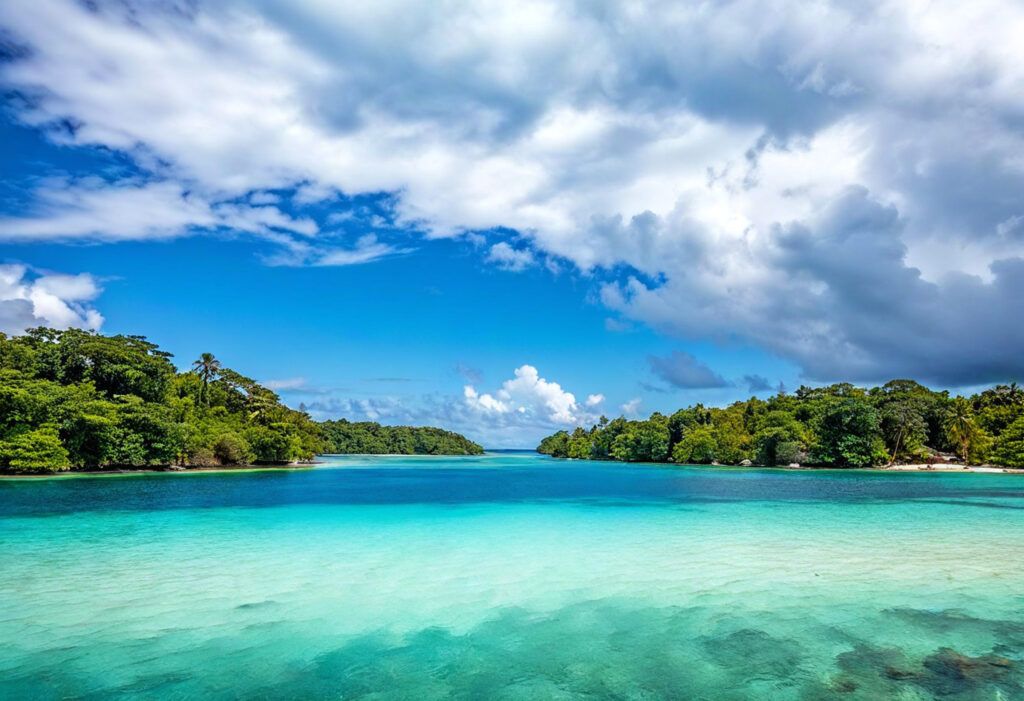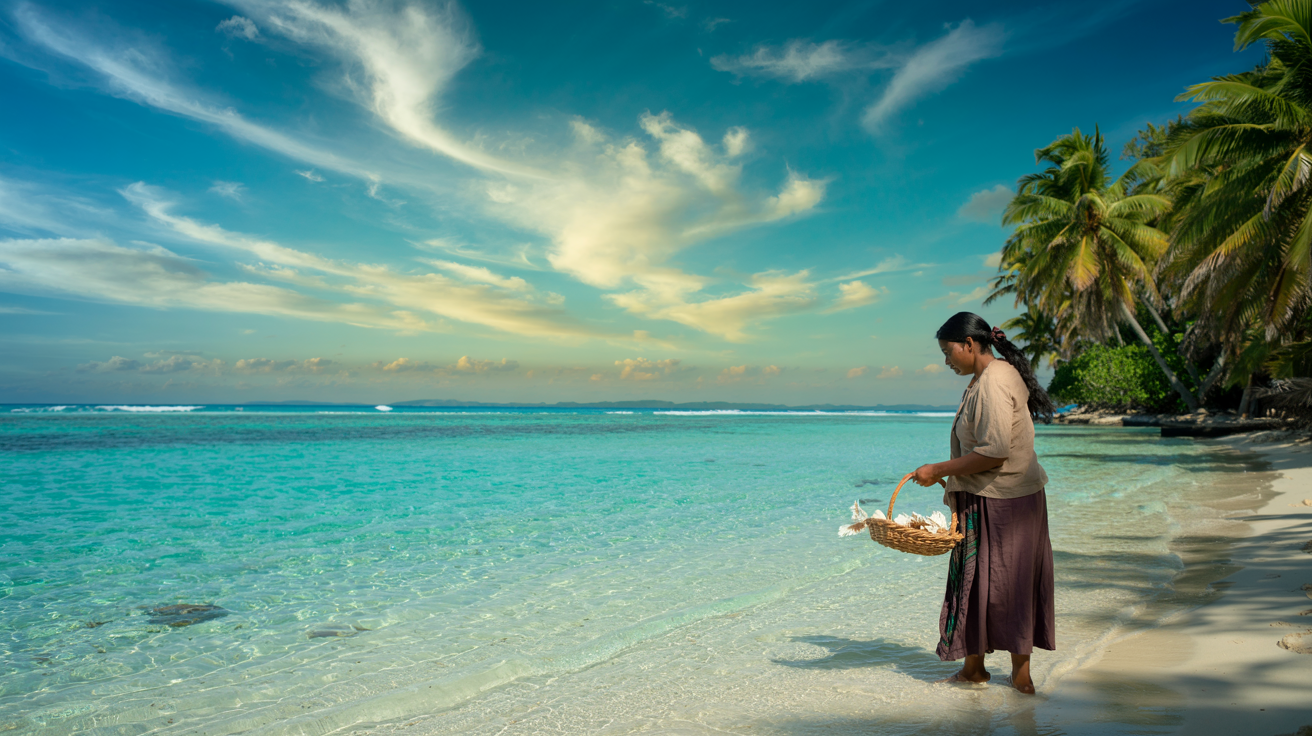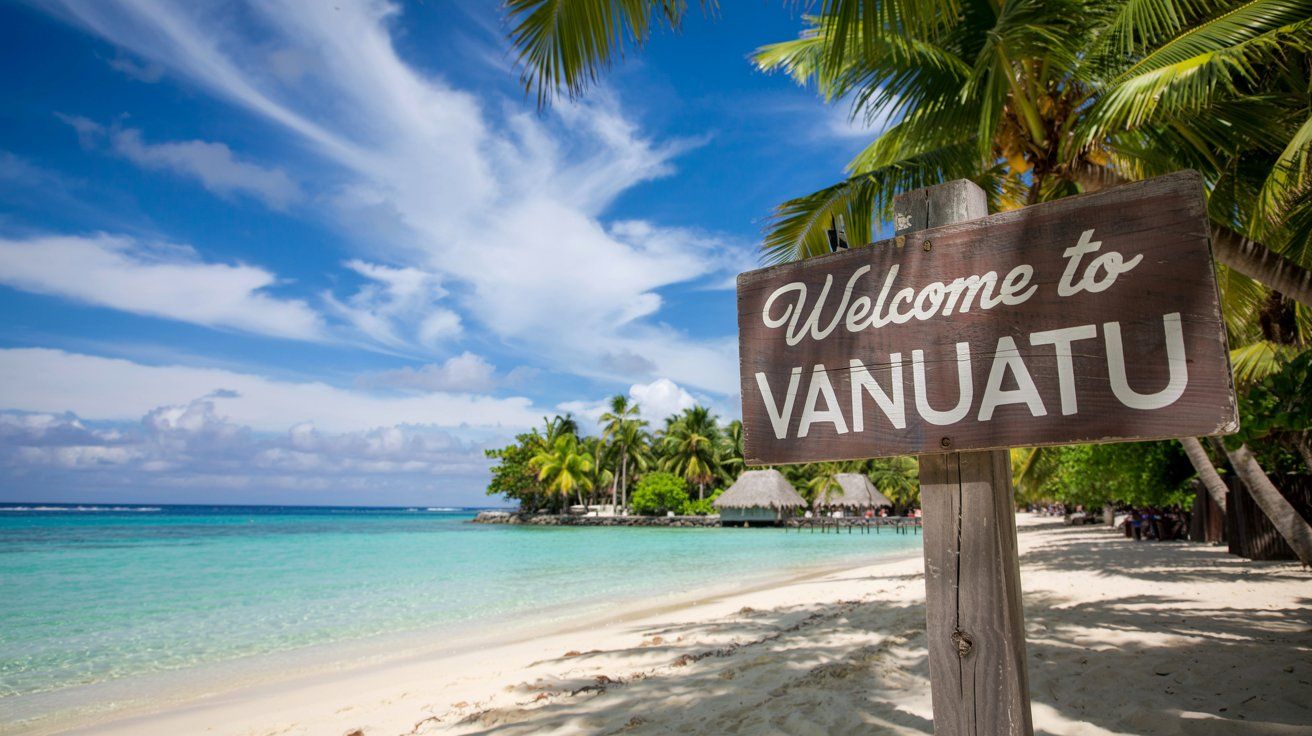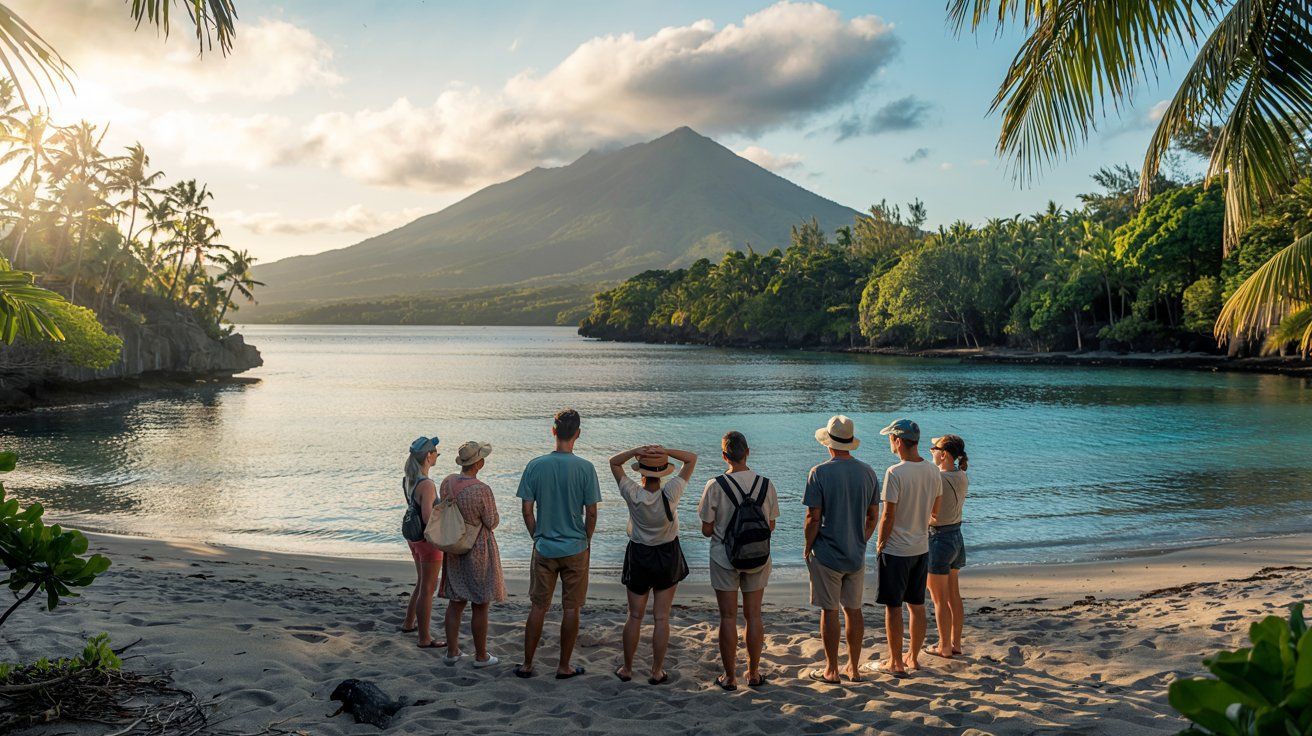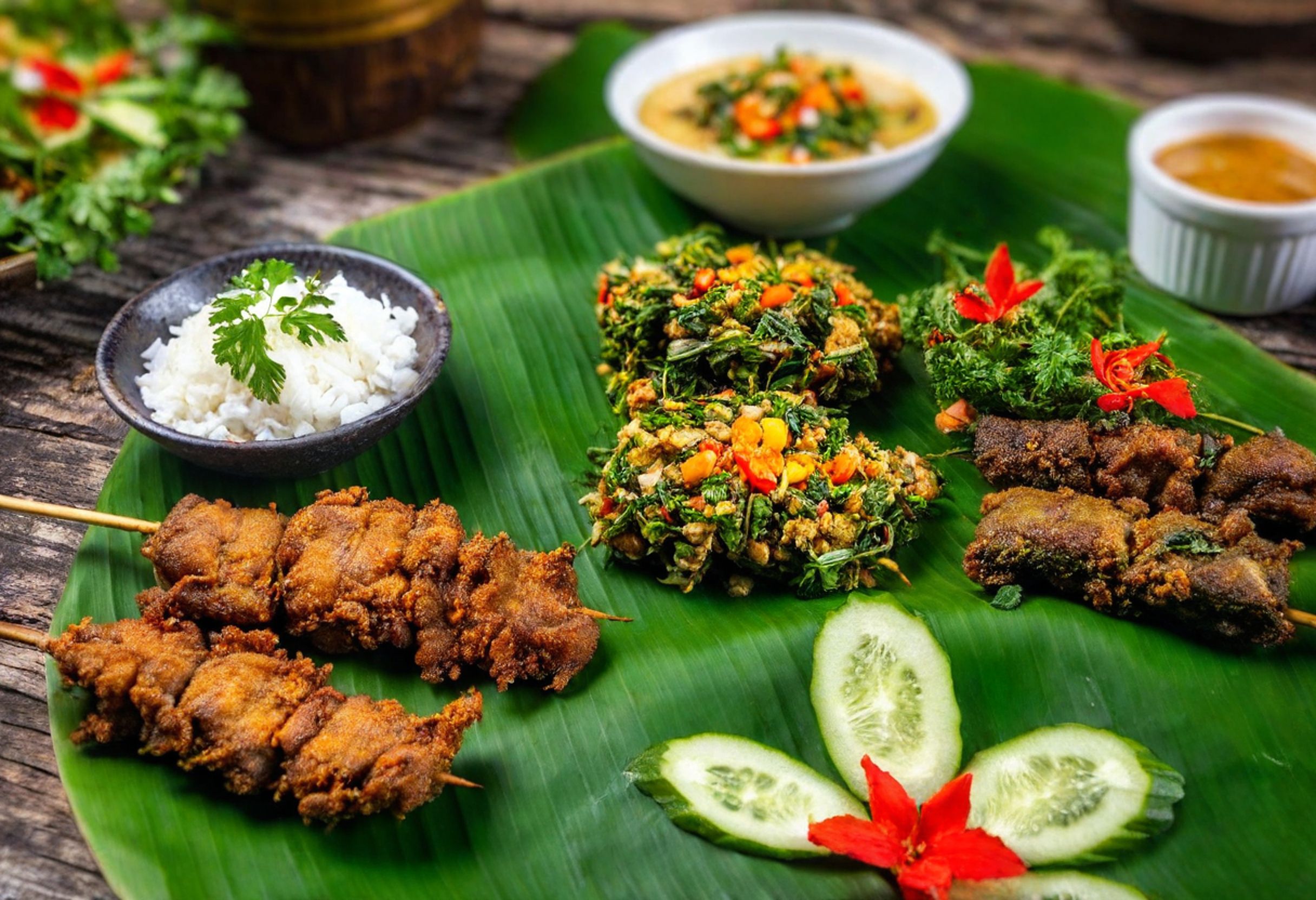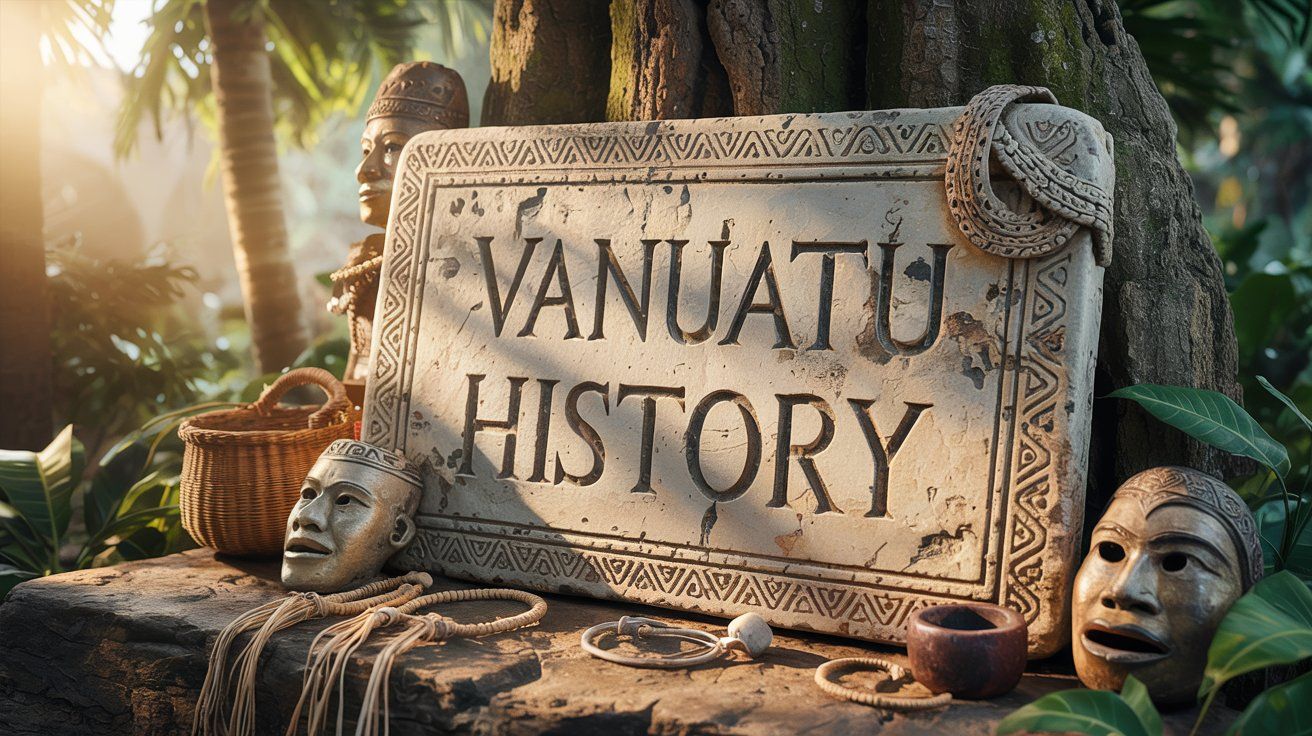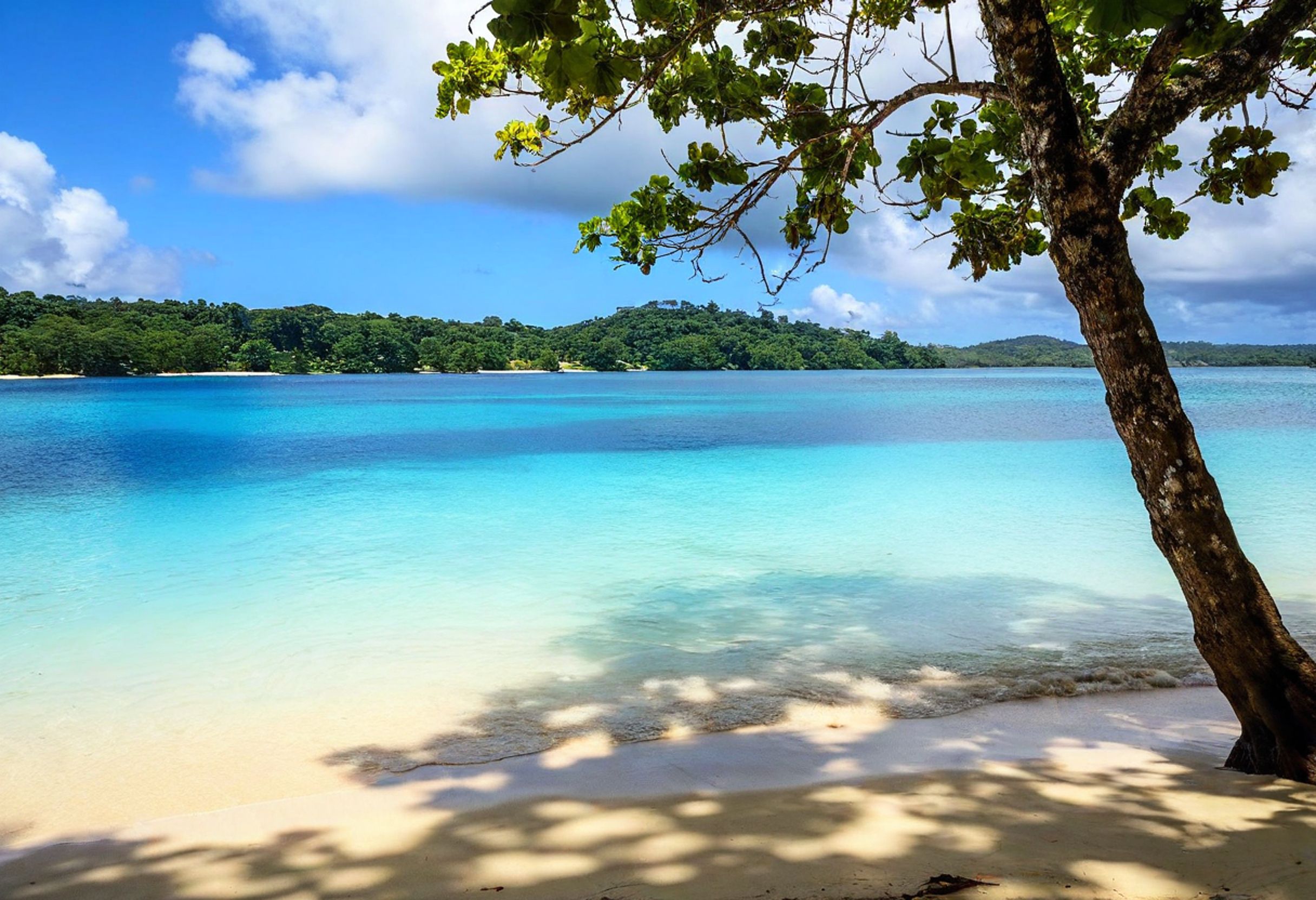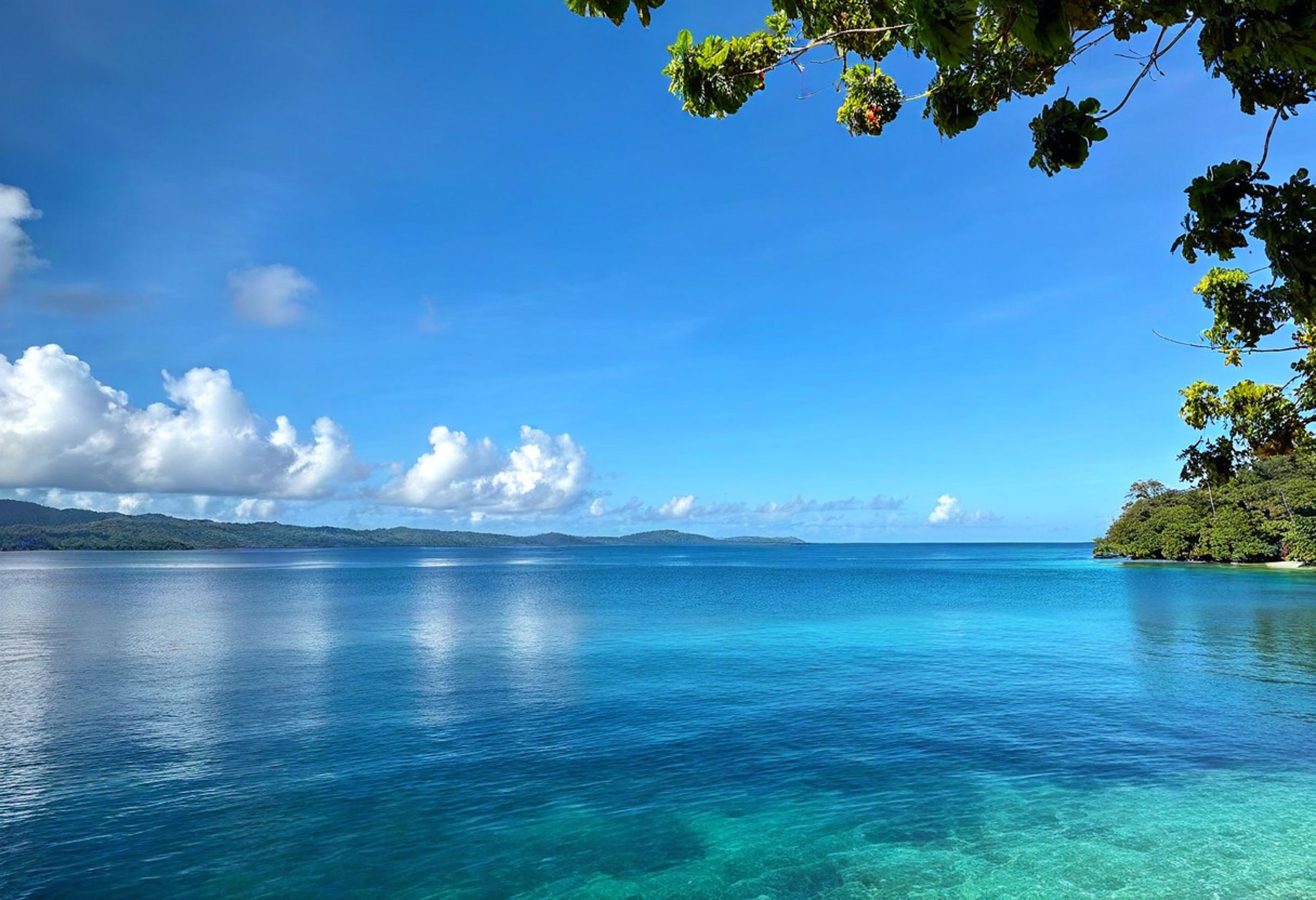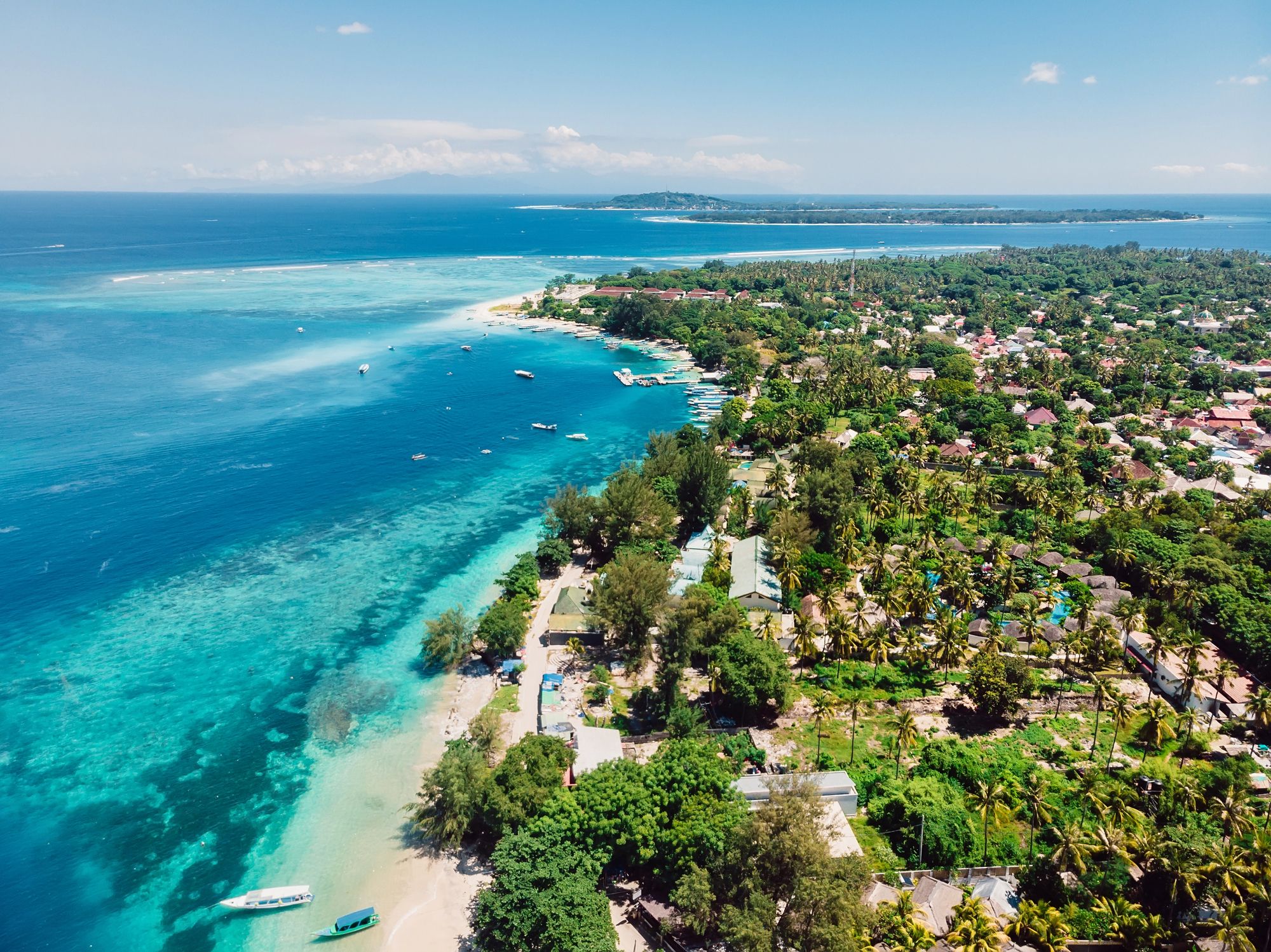Malampa province is the kind of place you go when you’re after a real break from the modern world. It’s scattered across three main islands—Ambrym, Malakula, and Paama—each with its own flavor. Forget about luxury resorts; Malampa’s all about genuine experiences and getting a taste of traditional island life. If you want the best weather, aim for the dry season from May to October—less rain, more time to explore without soggy shoes.
Life here is simple. On Wala Island, for example, you won’t find cars, electricity, or even what most would call a bathroom. Expect to stay in basic bungalows, usually run by local families who greet you like an old friend. That stripped-back lifestyle? It’s a huge part of what makes Malampa special.
From overwater bungalows to beachfront resorts, find your perfect stay in this island nation of more than 80 islands. Instant booking with best price guarantee!
Browse Accommodations Now
Your days can be as packed or as chill as you like. Watch traditional dances, check out ancient sand drawings, hike through green jungles, chase waterfalls, or snorkel in ridiculously clear waters. History buffs might get a kick out of the old cannibal sites—there’s a lot of complex history here, and the locals aren’t shy about sharing it.
Why Visit Malampa Province
Malampa is a bit off the beaten track, which is exactly why it’s so rewarding. Across Malekula, Ambrym, and Paama, you’ll find a blend of adventure, culture, and wild landscapes. If you’re tired of cookie-cutter tourist spots, this province is a breath of fresh air and authenticity.
Unique Attractions
There’s nowhere else quite like Malampa when it comes to volcanic drama. On Ambrym, you can hike up to active volcanic craters and stare into the glowing lava lakes of Mount Benbow and Mount Marum. It’s tough going, but the views are pure South Pacific magic.
History here runs deep. On Malekula, you’ll find ancient cannibal sites and guides who love telling stories that’ll stick with you long after you leave. These aren’t just ruins—they’re windows into a fascinating, sometimes wild, past.
And if you’re a water person, you’re in luck. The snorkeling spots are loaded with bright coral and curious fish. Hidden waterfalls in the jungle make for the ideal cool-off after a hot hike.
Cultural Diversity
Malampa’s culture feels alive and unfiltered. Sand drawing is a big deal here—recognized by UNESCO, no less. Watching someone create these intricate patterns in the sand while spinning a story is mesmerizing.
Traditional dancing isn’t just for show. During festivals, you’ll see the real thing—especially on Ambrym, where the Rom dance features massive masks and pounding rhythms. It’s intense and a little mysterious.
Villages actually want you to get involved. You can:
- Learn how to cook local dishes
- Try your hand at weaving
- Join a kava ceremony (brace yourself)
- Watch craftspeople at work
It’s not some staged performance for tourists—it’s the real deal, and you’ll feel it.
Natural Beauty
Nature here doesn’t hold back. Thick rainforests climb volcanic slopes, hiding all sorts of unusual plants and birds. Guided treks are the way to go if you want to spot the good stuff.
The coastlines are a mix of black volcanic sand and classic white beaches. Sometimes, between December and April, you might even spot whales passing by. Not a bad backdrop for your morning swim.
Cocoa plantations—especially on Malekula—dot the hills, and some of Vanuatu’s best chocolate comes from here. If you’re into food, tours of these estates are a tasty way to spend an afternoon and see how locals work the land.
Honestly, because Malampa’s a bit remote, you’ll often have beaches or jungle trails all to yourself. Just you, birds, and the occasional gecko. Kind of magical, really.
How to Get to Malampa
Getting to Malampa takes a little effort, but it’s worth it. Flights and boats are the main ways in, and you’ll probably need to do a bit of planning. The main islands—Malekula, Ambrym, and Paama—are all reachable if you’re patient and flexible.
By Air: Flying with Air Vanuatu
Air Vanuatu runs daily flights (except Saturdays) from Port Vila and Espiritu Santo to Norsup, the main airport on Malekula. It’s about an hour from Port Vila. Schedules can shift, so double-check before you book anything.
If you’re heading to southern Malekula or out to the Maskelyne Islands, there are flights to Lamap on Mondays and Thursdays. That’ll save you a lot of bumpy overland travel from Norsup.
Ambrym has two airports: Craig Cove in the west and Ulei in the east. Air Vanuatu covers both, though not every day.
Inter-Island Connections
From Port Vila, you can also hop over to Epi Island, which acts as a sort of jumping-off point for Paama and eastern Ambrym. Regular boats run from Epi to those islands.
Between Malampa’s islands, local boats connect Malekula, Ambrym, and Paama. They usually leave from places like Lamap, Port Sandwich, and Norsup.
If you need help sorting out your route, reach out to the Malampa Travel Centre at [email protected] or call +678 5548888. They’re pretty helpful.
Just a heads up: boat schedules are more of a loose guideline than a promise. Flexibility is your friend out here.
Top Islands in Malampa
Malampa’s got a handful of islands, each with its own quirks and highlights. The province’s name actually comes from its three main islands: Malekula, Ambrym, and Paama. Each is worth a visit if you’ve got the time and curiosity.
Exploring Malekula
Malekula is Vanuatu’s second-largest island and a hotspot for culture. Dozens of tribal groups still keep old customs alive. You can visit villages where ancient rituals and ceremonies aren’t just for show—they’re part of daily life.
Off the southern coast, the Maskelynes archipelago is a cluster of small islands: Uri, Uripiv, Rano, Wala, Atchin, and Vao. These places are famous for:
- Building traditional canoes
- Handicrafts and wood carving
- Gorgeous beaches and crystal-clear water
- Fishing communities where life moves at its own pace
Inland, thick rainforest hides some great hiking trails. Along the coast, coral reefs make for easy snorkeling—just don’t forget your mask and fins.
Highlights of Ambrym
Ambrym is all about its twin volcanoes, Mt. Benbow and Mt. Marum. The black sand beaches and ash fields make for a dramatic, almost otherworldly landscape. Hike up to the crater, and you’ll be rewarded with a front-row view of bubbling lava.
Elegant resorts, tropical villas, and vacation rentals with immediate confirmation. Experience a culture dating back to 1,300 BC in this breathtaking archipelago!
See Available Properties
Culturally, Ambrym is wild in the best way. Here’s what stands out:
- Rom dance ceremonies with those iconic oversized masks
- Sand drawing (seriously, you need to see this)
- Tamtam drum carving
- Magic rituals that locals will only hint at
Villages on Ambrym are welcoming, especially during festivals. Dry season (May to October) is your safest bet for volcano hikes.
Paama, just next door, is quieter. You’ll find peaceful villages and sweeping views of the surrounding islands. Local guides can help you navigate between islands by boat or ferry—just ask around and someone will point you in the right direction.
Where to Stay in Malampa
Looking for a place to stay? Malampa’s got you covered with island-style accommodations that feel authentic and comfortable. Most are built and run by locals, ranging from budget bungalows to slightly fancier guesthouses.
Accommodation Types
You’ll mostly find simple guesthouses and bungalows—clean rooms, basic amenities, nothing flashy. Prices usually start around $22 a night, so it’s easy on the wallet.
Meals are often included, cooked up by your hosts using fresh, local ingredients. It’s a great way to try Ni-Vanuatu dishes you won’t find back home.
In Lakatoro (Malekula’s main town), there’s a 3-star hotel with more Western comforts. But if you want the full island vibe, pick a beach country house—some even throw in a free breakfast and have cool touches like rainfall showerheads.
Book ahead if you’re coming in peak season (May-October). Most places offer free cancellation, so you can keep your plans flexible.
Eco-Friendly Lodges
Eco-lodges are a thing here, and they’re worth considering. These spots use solar power, collect rainwater, and are built from local materials. Most are family-run, so your money goes straight back to the community.
By staying at an eco-lodge, you’re helping conservation efforts and supporting local families. Plus, you’ll get a more personal experience than at a generic hotel.
Many eco-lodges organize cultural activities—think cooking classes, craft workshops, or guided walks through the jungle.
Some offer packages that include tours to nearby villages or natural sights. It’s a good deal and makes it easier to meet locals in a respectful way.
For the best price, check out booking sites like Agoda, Expedia, or Travala. Some even accept crypto if that’s your thing.
Outdoor Activities and Adventures
If you’re up for adventure, Malampa delivers. The province has some of the best outdoor experiences in Vanuatu, and the landscapes are still wild and mostly untouched.
Jungle Trekking
The rainforests here are thick, a little mysterious, and perfect for exploring. Malekula Island has well-marked trails winding through green canopies, where you might spot rare plants or hear birds you’ve never heard before. Hikes range from easy two-hour strolls to tough, all-day treks.
Local guides are a huge help—they know the shortcuts, the stories, and which plants you should (or shouldn’t) touch. Many trails lead to old tribal areas where you’ll pick up bits of local history along the way.
May to October is the sweet spot for hiking—less rain, fewer bugs. Wear solid shoes, bring bug spray, and don’t forget water. Some favorite routes are the North Ambrym Forest Walk and the Big Nambas Territory Trek.
Waterfall Exploration
Malampa’s waterfalls are a real treat after a good jungle trek. Several impressive cascades hide in the province’s rainforests. Lakatoro Falls on Malekula Island drops 20 meters into a pool that’s perfect for a swim.
Blue holes are another local attraction you won’t find just anywhere. These pools get their unreal blue color from limestone filtering. Nanda Blue Hole on Espiritu Santo is a boat ride away from Malampa and is ideal for swimming.
If you’re up for something different, the “Maskelyne Eco-Adventure” canoe tour takes you to several water spots over a few days. You’ll visit places like the Ringi Te Suh Giant Clam garden and some pretty secluded waterfalls.
Bring a waterproof bag and water shoes—those rocks can get slippery. Most waterfall spots don’t have facilities, so snacks and water are a must.
Cultural Experiences
Malampa province gives you a real look at Vanuatu’s heritage. Traditional villages welcome travelers to see ancient customs firsthand—think intricate sand drawings or ceremonial dances performed by local tribes.
Cultural Tours and Villages
Many villages in Malampa open up to visitors through organized tours. These visits let you see daily life and traditions that have lasted for centuries. You’ll usually watch weaving demonstrations, traditional cooking, and food prep with local ingredients.
The ceremonial koko nambo (bamboo stick ritual) is a highlight for most. The rhythmic music, honestly, is unforgettable. Some villages also show off sand drawing, a UNESCO-recognized art where intricate patterns tell stories from Vanuatu’s past.
Most tours run 2-3 hours and you can buy handcrafted souvenirs straight from the artisans. It’s best to dress modestly and always ask before taking photos.
Small Nambas and Local Tribes
The Small Nambas are one of Malampa’s most important tribes, known for their unique traditional dress and customs. Their name comes from the small namba (penis sheath) worn by men.
Easy booking across stunning accommodations from luxury resorts to eco-friendly retreats. This Y-shaped archipelago offers pristine beaches, active volcanoes, and world-class diving!
Secure Your South Pacific Getaway
Tours to Small Nambas territory, especially around Rano, let you see traditions that haven’t changed much over time. Expect to witness strong tam-tam (wooden drum) performances, custom songs, and dances that share the tribe’s stories.
Bird watchers will love how local guides point out native species. Many tribes also protect sacred sites, including old cannibal sites that give you a glimpse into Vanuatu’s complicated history.
When you’re in tribal areas, follow your guide’s advice about respectful behavior. Most tours include transport from main accommodations in Malampa.
Marine Wonders of Malampa
Malampa’s underwater world is honestly some of the best in the South Pacific. The clear waters around these islands hide colorful coral gardens and tons of sea life. If you love the ocean, this place is hard to beat.
Snorkeling Coral Reefs
The coral reefs here are fantastic for snorkeling all year. Amal Crab Bay Ecological Reserve is a top spot where you can see vibrant coral just meters from the beach.
Visibility usually hits 20-30 meters, so you’ll catch the full kaleidoscope of colors below. Keep an eye out for giant clams, sea turtles, and schools of tropical fish weaving through the coral.
Snorkeling is best between 9am and 2pm when sunlight brings the reef colors to life. Most guesthouses rent basic gear for about 500 vatu a day.
If you’re just starting out, check out the protected bays of Malekula—gentle currents and calm waters make it easy and safe.
Coastal Adventures
There’s more than reefs along Malampa’s coast. The Gorgonian Garden Dive near Luganville has stunning underwater landscapes with massive fan corals and unique sea life.
Kayaking through mangrove forests shows off a totally different side of the marine world. You’ll probably spot crabs, small reef sharks, and lots of birds that rely on these tangled roots.
Fishing with local guides is both fun and a bit of a lesson in tradition. Many villages invite visitors to join in net fishing, using techniques passed down for generations.
Walking the beaches at low tide, you’ll find tidepools packed with starfish, sea cucumbers, and bright shells. The west side beaches are the spot for sunsets.
Malampa Cuisine and Traditions
Malampa gives you a real taste of Melanesian food culture, along with traditions that have stuck around for ages.
Local Dishes and Markets
Lap Lap is the province’s signature dish. It’s grated yam, taro, or manioc on banana leaves, topped with coconut cream, and sometimes meat or fish. The whole thing gets wrapped up and slow-cooked in an earth oven.
The local markets are the best place to try fresh tropical fruits and veggies. Depending on the season, you’ll see island cabbage, taro, yams, mangoes, and papayas. Markets usually run in the mornings in bigger villages.
People here mostly cook the old way. Many families still use open fires or earth ovens called “nakamal.” If you’re invited to a meal, you’ll probably sit on woven mats and eat with your hands.
Fish and seafood are a big deal in coastal areas. They’re usually grilled over fire or cooked in coconut milk—simple and delicious.
Kava and Its Ceremonies
Kava is a huge part of life in Malampa and all of Vanuatu. This root drink has a mild sedative effect and is at the heart of social gatherings and ceremonies.
The way they make it is traditional. Men, or sometimes boys, pound the kava root and mix it with water for a strong, earthy drink. In some villages, you might even see the old method—chewing and spitting the root before mixing it up.
Kava ceremonies have their own rules. Men usually gather at sunset in the nakamal (meeting house). Before drinking, someone might say a prayer or intention. Chiefs or elders always get the first cup—it’s a sign of respect.
If you’re joining a kava ceremony, dress modestly and keep your voice down. Women’s roles change from village to village, so it’s smart to ask about local customs first. One clap before drinking and three after is common in many places.
Travel Tips for Malampa
Heading to Malampa province takes a little planning, but it’s worth it. These tips help you handle local conditions and make the most of your trip to this beautiful corner of the South Pacific.
Best Time to Visit
The dry season, May to October, is the sweet spot for visiting Malampa. You’ll get:
- Less rain and humidity
- Comfortable temperatures—usually 24-28°C (75-82°F)
- Calmer seas for easy island-hopping
- Great weather for trekking, swimming, and outdoor stuff
Keep in mind, “island time” is a real thing here. Schedules are relaxed. Most people speak Bislama, but you’ll get by with basic English in tourist spots.
If you’re looking for deals, the shoulder seasons (April-May and October-November) are quieter, with good weather, fewer crowds, and lower prices.
Health and Safety Advice
To avoid mosquito-borne illnesses:
- Use repellent with DEET
- Wear long sleeves and pants at dawn and dusk
- Sleep under mosquito nets if you have them
Pharmacies are few and far between, so pack:
- Basic first aid
- Your prescription meds
- Motion sickness tablets for boat rides
- Reef-safe sunscreen and after-sun lotion
Water quality changes from place to place. Bottled water is safest. If you’re going somewhere remote, let someone know your plans and when you’ll be back.
Locals are friendly and welcoming, but always respect customs and ask before taking photos of people or villages.
Day Trips and Nearby Destinations
Malampa is a great base for checking out other islands in Vanuatu. The nearby islands offer their own cultural experiences and natural wonders—perfect for mixing things up.
Visits to Tanna and Epi
Tanna Island is doable as a day trip from Malampa if you get an early start. The main draw is Mount Yasur, an active volcano you can visit safely with a guide. Flights between Malampa and Tanna take about 45 minutes. Give yourself at least six hours on Tanna to see the volcano and stop by a local village.
Epi Island is closer and known for its beaches and great snorkeling. Regular boats connect the islands, with trips taking 2-3 hours depending on the weather. Dugong Bay on Epi’s east coast is famous for its friendly dugongs (sea cows) that sometimes swim with visitors.
You can book these trips through your Malampa accommodation or with local outfits like Island Time Tours.
Combining Malampa with Espiritu Santo
Espiritu Santo really shines when you team it up with Malampa for a longer Vanuatu adventure. Santo’s got world-class diving—think Million Dollar Point and the legendary SS President Coolidge wreck. And those blue holes? Absolutely unreal. The water’s so clear it almost looks fake.
You can catch a flight between Malampa and Santo about 3 or 4 times a week, and you’ll be there in half an hour. If you’re not in a rush (or just want to save some cash), cargo boats do the trip in 5 or 6 hours.
Find available hotels and vacation homes instantly. No fees, best rates guaranteed!
Check Availability Now
Most folks hang out in Malampa for a few days—maybe three or four—then head over to Santo for another four or five days. It’s a solid way to get a taste of Malampa’s culture and then dive into Santo’s natural magic. Not a bad way to spend a week or two, honestly.

